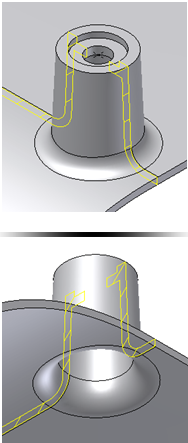Rule-based fillets are useful for creating grills or adding to machined parts. You can also exclude a face from a rule-based fillet.
Create a Rule-Based Fillet Grill
To fillet all the edges of the grill with a larger radius around the grill boundary and a smaller radius on the grill ribs:
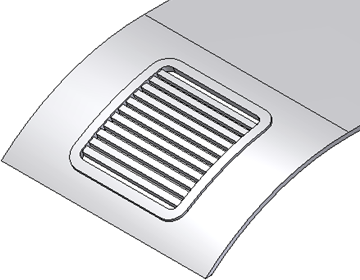
- On the ribbon, click 3D Model tab
 Show Panel icon
Show Panel icon  . Select Plastic Part panel to display the Plastic Part panel, and then select Rule Fillet
. Select Plastic Part panel to display the Plastic Part panel, and then select Rule Fillet  .
. - Verify that the Source is set to Features and the Rule is set to Against Part.
- Select the grill and enter an appropriate radius for the edges at the intersection between the grill and the target part body.
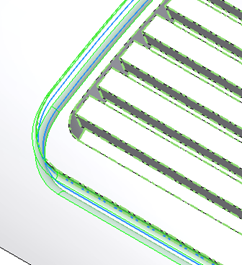
- Click to Add another rule.
- Make sure that the Source is set to Features and the Rule is set to Free Edges.
- Select the grill and enter an appropriate radius for the remaining edges.
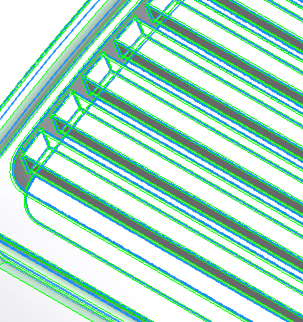
- Click OK to complete the rule-based fillet.

Add a Rule-Based Fillet to a Machined Part
To fillet the pocket to model a milling process with a tool of 3 mm. diameter and 1 mm. cutting radius, all the concave vertical edges must have a fillet of 1.5 mm. radius (generated by the vertical approach of the tool), while the edges of the bottom face must have a fillet of 1 mm. radius corresponding to the tool cutting radius
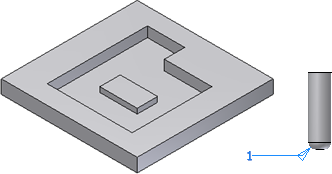
- On the ribbon, click 3D Model tab
 Show Panel icon
Show Panel icon  . Select Plastic Part panel to display the Plastic Part panel, and then select Rule Fillet
. Select Plastic Part panel to display the Plastic Part panel, and then select Rule Fillet  .
. - Set the Source to Face, and select the bottom face of the pocket.
- Set the rule to Incident edges and select a vertical edge to define the axis.
- Verify that the direction is pointing up to include all the vertical edges that start from the selected face and go upward. If you try to flip to the opposite direction, no edge is selected. Enter a 1.5 mm. radius.

- When machining the pocket, if you do not want to round the convex edges, cancel the All Rounds option in the Options box.
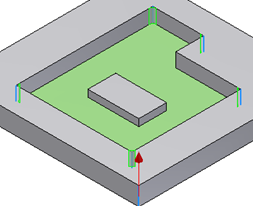
- Define the 1 mm. radius fillets of the bottom edges.
- “Click to add” a new rule. Set the Source to Face. Select the same face as in the previous rule, but now set the rule to All Edges.
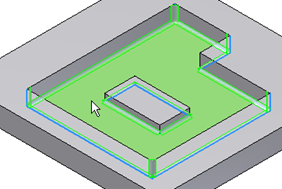
- Enter a 1 mm. radius, and click OK to complete the rule-based fillet.

Even after a change in the pocket shape, the Rule-based fillet rebuilds correctly.
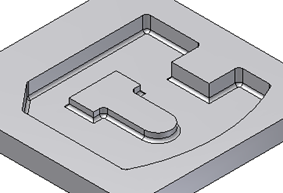
Exclude a Face from a Rule-Based Fillet
Fillet the edges of the highlighted boss with different radii without filleting the edges on the selected face.
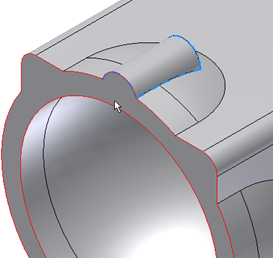
- On the ribbon, click 3D Model tab
 Show Panel icon
Show Panel icon  . Select Plastic Part panel to display the Plastic Part panel, and then select Rule Fillet
. Select Plastic Part panel to display the Plastic Part panel, and then select Rule Fillet  .
. - Verify that the Source option indicates Feature, and that the Rule indicates Free Edges. Select the feature, and enter a radius value.
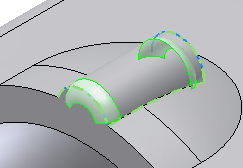
- Add another rule to the same rule-based fillet: Source: Feature; Rule: Against Part.
- Select the same feature, and enter a radius value. Note that the edges of the planar face get fillets also. The face of the boss is merged with the face of the body.
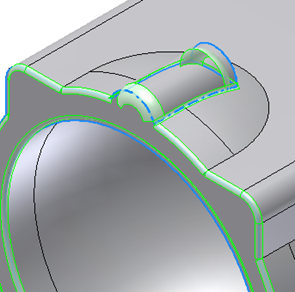
- To prevent the merged faces from being included in the edges selection, click More, and check the Remove Merged Faces option. The preview fillets on the planar face disappear.
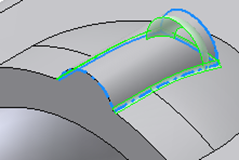
- Click OK. The Rule-based fillet is complete.
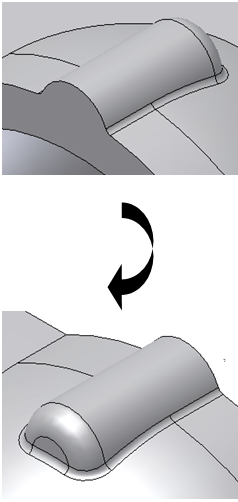
Use a Rule-Based Fillet to Control Wall Thickness Between Boss and Part Body
In this example, we achieve a constant thickness wall at the intersection between a feature and the part. A constant thickness wall is often a requirement of molded plastic products.
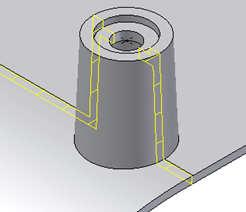
- On the ribbon, click 3D Model tab
 Show Panel icon
Show Panel icon  . Select Plastic Part panel to display the Plastic Part panel, and then select Rule Fillet
. Select Plastic Part panel to display the Plastic Part panel, and then select Rule Fillet  .
. - Set the Source to Feature and select the Boss. Set the Rule to Against Part. Clear the All Rounds option. Enter a suitable fillet for the outside of the part.
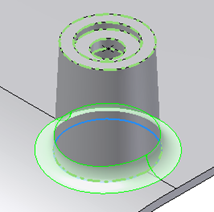
- “Click to add” another rule. Set the Source to Feature and select the same Boss. Set the Rule to Against Part. This time clear the All Fillets option. Enter a radius which is equal to the one entered in the previous rule augmented by the part thickness.

- Click OK. The Rule fillet is finished and the part has a constant thickness at the intersection Boss-part body.
